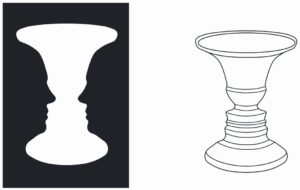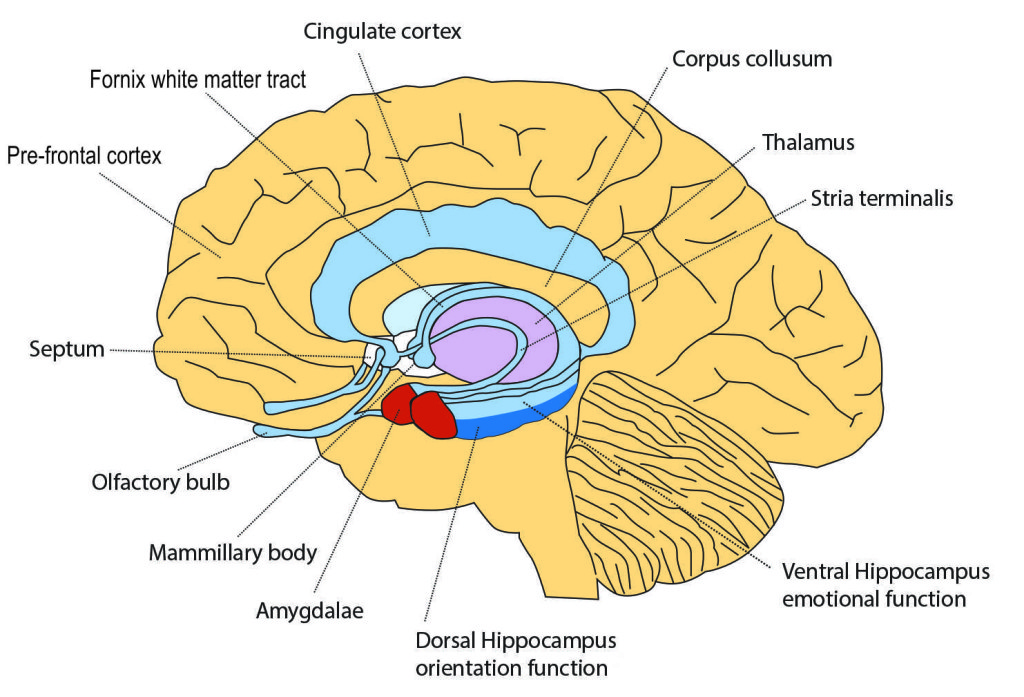What’s a comparison pattern?
In the context of our Primal Process Theory, and like the four REAL force factor model, the comparison pattern system represents an attempt to explain an inherent process endemic to the hippocampal complex, as well as our perceptual system. According to perception theory, each of us visually attends to our world in such a way that the ‘object’ of our attention comes to the foreground in our mind, while the ‘background’ merely provides a situational frame in which we contextualize our experience. Yet it is important to note here that we have the ability to interchange the object or figure in the foreground and the contextualizing ‘ground’ material found in the background. The famous Figure/Ground experiment of two faces facing one another or the outline image of a vase is a classic example of this phenomenon, as depicted below.
This suggests an amazing amount of processing flexibility in how we see, and hence, experience our world. This same figure-ground effect also appears to apply to our auditory perceptual system as well.
Within the mind-brain system, this ability to flip between the two is likely located in the hippocampal complex. The outer dorsal regions of the hippocampi arcs have been found to process positional information related to the environment, while the inner ventral portion of the hippocampi arcs have been found to process emotional information likely arising out of the amydalae. (Link to research citation and abstract.)
This suggests that we have a dual track ‘comparison pattern processor’ built into the very wetware of our brains, a functionality which appears to have been evolutionarily conserved in higher cognitive functions as well.
One compelling example of this is found in the frontal or anterior region of the Cingulate Cortex or Gyrus (see illustration above). In the years 2000 and then 2001, brain researchers found that this structure anatomically recapitulated the same dual track ‘comparison pattern processor’ functionality, such that the dorsal or outer region of the structure processed cognitive information, while the ventral or inner region processed emotional information.
A likely emergent property of this ‘comparison pattern processor’ is the REAL need assessment and threat assessment system. A possible co-emergent by-product of the Fighting, Appeasing and Defeated mindsets, six habitual cognitive comparison patterns emerged. These are: WorstCom, NegCom, RoleCom, PICom, PosCom and BaseCom. Without getting into an explanation of each of these comparators, which are explained in some detail within Book One of Primal Mind, Primal Games, suffice it to say that the behaviors and language associated with each of these were diagnostically derived as markers of likely mindset functionality or dysfunction in clients receiving counselling.
The six comparison patterns noted can tell you a lot about where a person is mentally ‘coming from’ as they interact with you. They can also tell you something about where you are likely operating in your own mind. Knowing this helps you determine what issues you may need to address within your own life, as well as help you formulate strategies of how to spot and counter the excessively ‘assertive’ communication styles of others.

